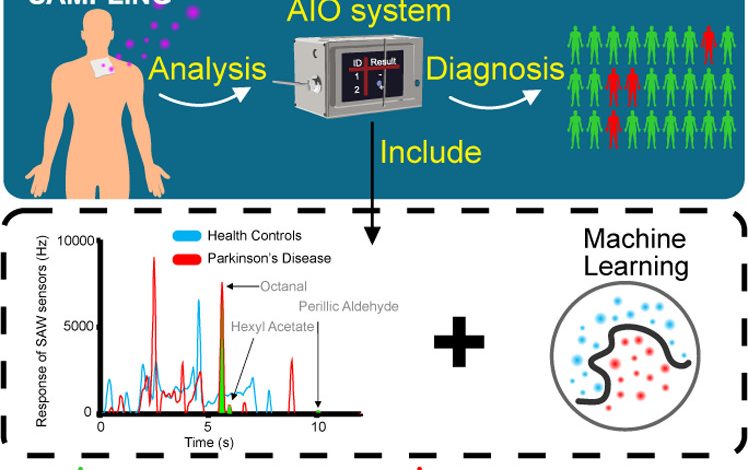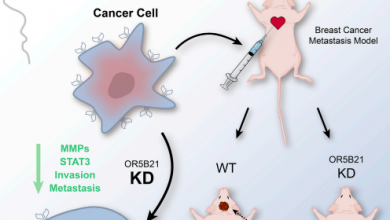Artificial Intelligent Olfactory System for Parkinson’s Disease Diagnosis
A research team from Zheijan University introduce a novel method for diagnosing Parkinson’s disease (PD) using an Artificial Intelligent Olfactory (AIO) system, published in ACS Omega.


Current PD diagnosis methods lack consistency and rely on subjective assessments, often leading to late-stage detection. Early studies suggest a unique smell in PD patient sebum, indicating potential for noninvasive diagnosis through odor profiling.
The team developed an AIO system combining fast gas chromatography (GC) with machine learning (ML) algorithms. Sebum samples from PD patients and healthy controls were analyzed to identify significant volatile organic compounds (VOCs).
- Distinct VOC peaks, including octanal, hexyl acetate, and perillic aldehyde, showed significant differences between PD and control groups.
- The AIO system achieved 70.8% accuracy in classifying PD patients.
- Notably, Naive Bayes (NB) and AdaBoost (AB) algorithms reached the highest accuracy during model establishment, scoring 0.855 and 0.846, respectively.
The obtained results show that the AIO system offers a noninvasive and potentially more accurate method for PD diagnosis based on sebum odor profiling. Early screening and diagnosis facilitated by this technology can improve patient outcomes by enabling prompt intervention and monitoring of disease progression.
“This research presents a significant advancement in neurodegenerative disease diagnosis, leveraging artificial intelligence and olfactory sensing technologies to revolutionize healthcare practices” states Prof. Marvin Edeas, founder of DOS, University of Paris, France.




